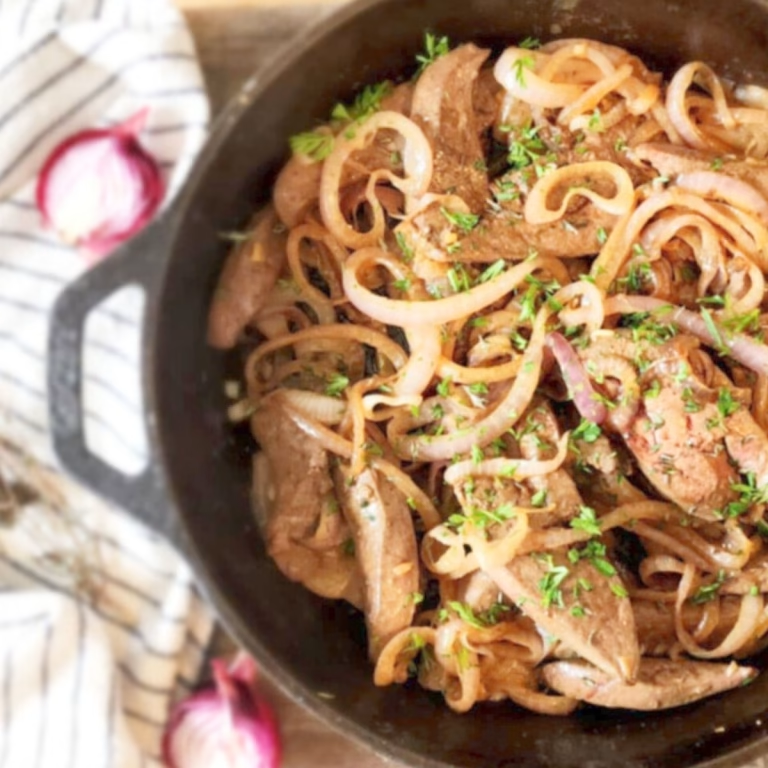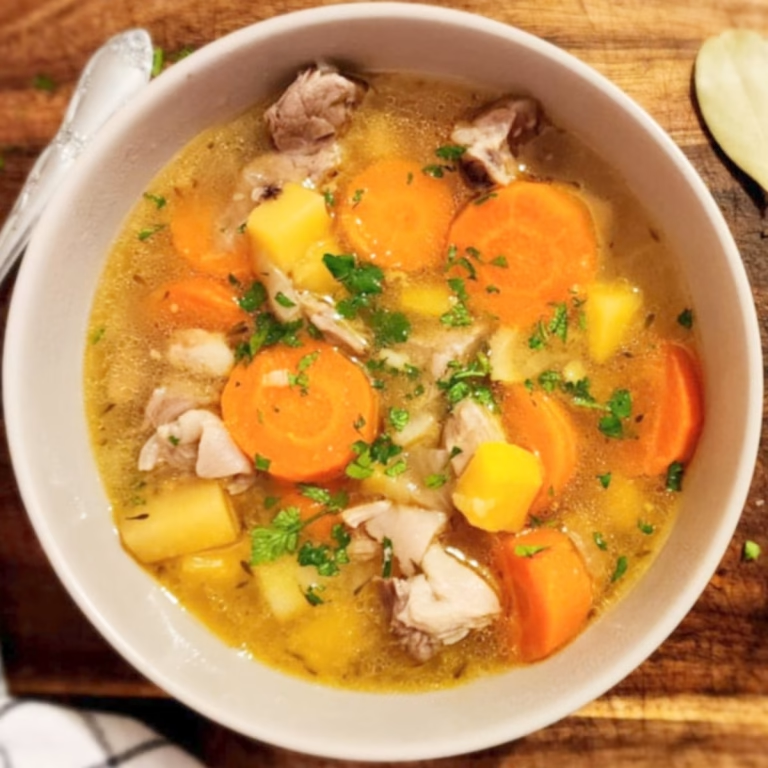Tangy, colorful, delicious, and full of health benefits, this fermented coleslaw is easy to make and a great way to add beneficial probiotics into your diet and preserve some of your harvest!

Disclosure: as an Amazon Associate, I earn a small commission from qualifying purchases at no extra cost to you. Read my full Disclosure and Policy here.
Why You’ll Love This Recipe
If you enjoy sauerkraut but want something a little fresher, more colorful, and full of life, this fermented coleslaw is the way to go. It’s bright, crunchy, tangy, and a little spicy, all while being packed with antioxidants and gut-healthy probiotics.

The beauty of lacto-fermenting vegetables is how simple it is. All you really need are fresh veggies, good salt, a jar, and a bit of time. The beneficial bacteria naturally present on the vegetables do all the work, turning sugars into lactic acid. This not only gives your coleslaw its tang, but also makes vegetables easier to digest and boosts their nutritional value. And of course, those probiotics give your gut health a natural lift.
Fermenting your own vegetables is also incredibly frugal and far cheaper (and healthier) than store-bought ferments or probiotic supplements. Plus, it’s a traditional way to preserve your garden harvest. Properly stored, jars of fermented vegetables can last well over a year in the fridge or root cellar!
If you like fermenting your own veggies, try these delicious and beneficial fermented carrots and ginger, and my go-to lacto-fermented onions.
This fermented coleslaw is a wonderful side dish to keep on hand. Serve it alongside meats, fish, or eggs, or tuck it into wraps and sandwiches. You can enjoy it plain and crunchy, or stir in a little mayonnaise or ranch for a creamy version.
How to Serve This Fermented Coleslaw
Fermented coleslaw is endlessly versatile. Try it with roasted or boiled meats, sausages, BBQs, spoon it onto burgers and wraps, or simply enjoy a small portion with meals to help digestion. Its tangy crunch pairs especially well with rich cuts like organ meats, or try it alongside my rustic braised goat shank chops. Yum!
If you’re used to coleslaw being creamy and sweet, you can mix your fermented slaw with a spoonful of mayo or ranch, and add a sprinkle of sugar for balance. Try it with this amazing fermented mayo from my friend Heidi at Food For Life Garden, or with this healthy ranch dressing from Kiera at The Humming Homemaker.

Fermented Coleslaw FAQs
Can coleslaw be fermented?
Yes! The raw, shredded vegetables that usually make up coleslaw (like cabbage, carrots, onions, or scallions) can be lacto-fermented simply by adding salt and letting the naturally occurring lactobacillus bacteria do the work. If you want to speed things up, you can add a spoonful of fresh whey, a starter culture, or a splash of brine from a previous ferment, but it’s not necessary at all! If you want to make a creamy coleslaw with mayo or another creamy dressing, you’ll add these to the vegetables after, once they’re fermented.
Is fermented coleslaw good for you?
Yes! Not only fermented coleslaw is a great source of gut-healthy probiotics and prebiotics, but the fermentation makes the vegetables easier to digest and more nutritious by breaking down the starches and reducing the anti-nutrients.
What does fermented coleslaw taste like?
Fermented coleslaw has a tangy, slightly sour flavor with a refreshing crunch. The exact taste depends on the vegetables, herbs, and spices you use, as well as how long you let it ferment. A shorter ferment will be milder and crisp, while a longer ferment will be more sour and complex.
How long does fermented coleslaw last in the fridge?
When stored properly, fermented coleslaw can last for a year or more in the refrigerator or a cool root cellar. Just make sure the veggies stay submerged in brine and always check for any signs of spoilage (like mold) before eating.
What is the white, milky stuff on top of my fermenting vegetables?
Sometimes during lacto-fermentation, you might notice a thin white, milky film forming on top of your veggies or brine. This is called Kahm yeast. It usually shows up when the salt level is a bit low, the temperature is too warm, or the ferment has been exposed to extra oxygen.
Kahm yeast is not harmful, but it can affect the flavor and texture of your ferment and may create a surface where mold could grow. If it’s just a thin layer on top, you can carefully skim it off and keep fermenting. But if the whole jar smells off, tastes strange, or is completely overtaken, it’s best to discard it and start fresh.
Ingredients for This Fermented Coleslaw

Cabbage. Use one firm head of green or purple cabbage, or mix them both (as I did). For the best health benefits and fermentation success, use organic veggies!
Onion. Use a large red onion.
Carrots. Two large fresh, sweet carrots are enough to add bright color, sweetness, and extra vitamins!
Parsley. Adds freshness and aroma to this coleslaw.
Garlic. For a hint of extra flavor and spice, plus fermented garlic has a ton of health benefits and is easier to digest than fresh raw garlic.
Salt. Essential for lacto-fermenting vegetables. I like Redmond Real Salt for its purity, unique flavor and trace minerals.
Sugar (optional). The bacteria will convert most of it into lactic acid, but you can add some sugar for an extra hint of sweetness and for speeding up the fermentation process.
Black pepper (optional). Adds an extra hint of warmth and spice.
Mustard seeds (optional). For extra flavor and bite.
Tools You May Need
Cutting board and knife(s).
Food processor with grater attachment (optional). I have this one.
Large mixing bowl.
Mason jars. I used three 500-ml wide mouth mason jars for this recipe.
Fermentation weights and lids (optional but helpful).
How To Make This Fermented Coleslaw
Step 1. Prepare your vegetables. Peel onion, garlic, and carrots. Remove the outer leaves from your cabbage, core it, and slice. Chop parsley and garlic.

Step 2. Shred the vegetables. Use a food processor with the grater attachment for ease, or slice cabbage and onion thinly and grate carrots by hand.

Step 3. Combine everything in a large bowl. Add salt, sugar (if using), chopped parsley, and garlic.

Step 4. Massage the vegetables with clean hands for about 5 minutes like you were kneading dough, helping them release their liquid. Cover the bowl and let rest for 20 minutes, then massage again until juicy.

Step 5. Pack the mixture firmly into mason jars, pressing down with your hands or a tool to remove air bubbles.

Step 6. Pour in extra liquid so the veggies stay submerged. Add brine (made with about 1 tsp salt per cup of filtered water) if needed, and weigh down with fermentation weights or folded outer cabbage leaves.

Step 7. Cover jars, place them on a dish or tray to catch any liquid, and let them ferment at room temperature. If not using fermentation weights and lids, open jars to press down the veggies and burp any pressure daily. Let the veggies ferment for 5–14 days, depending on your taste and kitchen temperature. Check and taste after a few days.

Step 8. Once the coleslaw it’s as tangy as you like, store in the fridge. Enjoy as a side dish as is, or stir in a little mayo or ranch dressing for a creamy twist.

Notes
You can add other vegetables, such as beets, to this slaw—just be sure to increase the salt if you add more volume.
Feel free to play around with herbs and spices, too. Dill and ginger make wonderful additions and give the coleslaw a whole new character.
Stored properly, this fermented coleslaw will last in the refrigerator or a cool root cellar for up to a year. Always check for signs of mold or spoilage before eating.
If you try this fermented coleslaw, I’d love to hear from you! Drop me a comment down below and let me know some fun variations and how you like to serve it! Don’t forget to leave me a 5-star review if you liked this recipe!
Pin It For Later

Related Posts and More Recipes
Why your Gut Health is Important and How to Improve it Naturally
Fermented Carrots and Ginger Two-Way Recipe
How to Make Lacto-Fermented Onions
Bulgarian Yogurt in the Instant Pot Recipe
Printable Recipe Card

Fermented Coleslaw: Easy and Delicious Gut-Healthy Recipe
Equipment
- Cutting board and knife(s).
- Food processor with grater attachment (optional).
- Large mixing bowl.
- Mason jars. I used three 500-ml wide mouth mason jars for this recipe.
- Fermentation weights and lids (optional but helpful).
Ingredients
- Cabbage about 2 lbs or one medium head
- 1 large red onion about 1 cup sliced
- 2 large carrots about 1 cup shredded
- 1-2 cloves garlic
- 1/4 cup chopped parsley
- 2 tbsp salt
- 1 tbsp sugar optional
- 1/4 tsp black pepper optional
- 1/4 tsp mustard seed powder optional
Instructions
- Prepare your vegetables. Peel onion, garlic, and carrots. Remove the outer leaves from your cabbage, core it, and slice. Chop parsley and garlic.
- Shred the vegetables. Use a food processor with the grater attachment for ease, or slice cabbage and onion thinly and grate carrots by hand.
- Combine everything in a large bowl. Add salt, sugar (if using), chopped parsley, and garlic.
- Massage the vegetables with clean hands for about 5 minutes like you were kneading dough, helping them release their liquid. Cover the bowl and let rest for 20 minutes, then massage again until juicy.
- Pack the mixture firmly into mason jars, pressing down with your hands or a tool to remove air bubbles.
- Pour in extra liquid so the veggies stay submerged. Add brine (made with about 1 tsp salt per cup of filtered water) if needed, and weigh down with fermentation weights or folded outer cabbage leaves.
- Cover jars, place them on a dish or tray to catch any liquid, and let them ferment at room temperature. If not using fermentation weights and lids, open jars to press down the veggies and burp any pressure daily. Let the veggies ferment for 5–14 days, depending on your taste and kitchen temperature. Check and taste after a few days.
- Once the coleslaw it’s as tangy as you like, store in the fridge. Enjoy as a side dish as is, or stir in a little mayo or ranch dressing for a creamy twist.






